|
[home] [subscription form] [cover story] [introduction] [people and places] [medical spa destinations]
|
||

A is for A4M
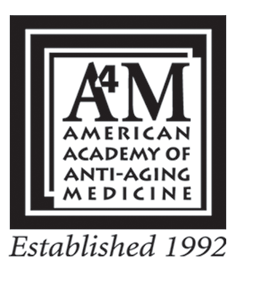 The American Academy of Anti-Aging Medicine (A4M; www.worldhealth.net) is the world's largest professional organization dedicated to advancing research and clinical pursuits that enhance the quality, and extend the quantity, of the human lifespan. A4M is comprised of 19,000 physician, scientist, and health practitioner members from 90 nations. Since its founding in 1992, A4M's scientific educational programs have trained over 100,000 medical professionals, and the organization's education and advocacy initiatives have expanded the availability of advanced biotechnologies and leading-edge preventive healthcare throughout the world.
The American Academy of Anti-Aging Medicine (A4M; www.worldhealth.net) is the world's largest professional organization dedicated to advancing research and clinical pursuits that enhance the quality, and extend the quantity, of the human lifespan. A4M is comprised of 19,000 physician, scientist, and health practitioner members from 90 nations. Since its founding in 1992, A4M's scientific educational programs have trained over 100,000 medical professionals, and the organization's education and advocacy initiatives have expanded the availability of advanced biotechnologies and leading-edge preventive healthcare throughout the world.
The A4M is a member-based organization. Approximately 85% of A4M members are physicians (MD, DO, and MBBS), and approximately 12% are scientific healthcare practitioners (DC, DDS, ND, DPM, RPh, PhD, RN, NP, and PA). Membership dues specifically support the educational and advocacy initiatives to advance the acceptance and adoption of anti-aging medicine around the world. Physician members receive many valuable benefits, including the opportunity to participate in the Online Referral Service. A4M fields more than 1,000 inquiries per month from the general public interested in finding a qualified anti-aging medical specialist. The Online Referral Service, accessible at www.worldhealth.net, strategically positions your practice or clinic at the avail of potential clients from around the world, 24/7.
T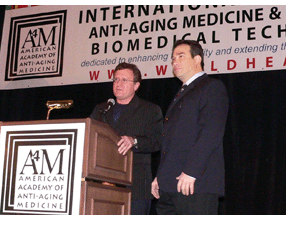 he A4M co-sponsors the Annual International Congress on Anti-Aging Medicine & Regenerative Biomedical Technologies. This Congress is the largest and most influential academic event worldwide in the space of cutting-edge preventive medicine. With three sessions taking place annually, the Congress is the world's leading forum on clinical and research breakthroughs in anti-aging medicine and regenerative biomedical technologies. Presentation topics at the A4M's Congress include:
he A4M co-sponsors the Annual International Congress on Anti-Aging Medicine & Regenerative Biomedical Technologies. This Congress is the largest and most influential academic event worldwide in the space of cutting-edge preventive medicine. With three sessions taking place annually, the Congress is the world's leading forum on clinical and research breakthroughs in anti-aging medicine and regenerative biomedical technologies. Presentation topics at the A4M's Congress include:
• Bio-identical hormone replacement therapy
• Nutritional therapies
• Laboratory testing and diagnostics for anti-aging medicine
• Environmental toxins and clinical detoxification
• Biological age markers
• Aesthetic medicine and non-invasive skin rejuvenation
• Medical spas and marketing
Visit www.worldhealth.net/event for program details and online registration about the upcoming 2007 Sessions of the 15th Annual Congress, including:
• April 26-28, 2007: Spring 2007 Session [Orlando, FL USA], projected attendance 3,500 physicians and health practitioners
• August 3-5, 2007 [Chicago, IL USA], projected attendance 4,000 physicians and health practitioners
• December 12-15, 2007 [Las Vegas, NV USA], projected attendance 7,000 physicians and health practitioners
Additionally, the A4M co-sponsors/co-supports more than 25 anti-aging/regenerative medical scientific conferences worldwide.

B is for Business Plan
 Your "Road Map" to success, a Business Plan provides operational details as well as financial projections for your practice or clinic. In your Business Plan, it is essential to define the strategies by which you will achieve financial success. An overview of diagnostic and therapeutic procedures to be offered, as well as the projected number annually to be conducted, along with the up-front and ongoing costs of related equipment, will help to substantiate your financial projections.
Your "Road Map" to success, a Business Plan provides operational details as well as financial projections for your practice or clinic. In your Business Plan, it is essential to define the strategies by which you will achieve financial success. An overview of diagnostic and therapeutic procedures to be offered, as well as the projected number annually to be conducted, along with the up-front and ongoing costs of related equipment, will help to substantiate your financial projections.
In order to be financially successful, your practice or clinic's Business Plan must reflect specific and measurable objectives. The Business Plan must also chart the attainment of such objectives on a realistic timetable.
Don't be afraid to update your Business Plan on a periodic basis, to reflect course corrections and lessons learned. Your Business Plan should up-to-date and reflect your most current objectives as well as significant achievements.
Be sure to convey the objectives of your Business Plan to your staff. Make sure your Plan objectives are universally understood, so your personnel can complete their responsibilities in a fashion conducive to moving your Business Plan forward.
C is for Certification
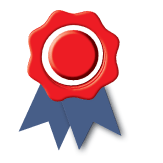 Professional certification for both physicians and health practitioners serves as a significant professional landmark that assists you with successfully deploying the clinical applications of anti-aging and regenerative medicine in the practice setting. The American Board of Anti-Aging / Regenerative Medicine (ABAARM) was established in 1997 as a professional physician (MD, DO, and MBBS) certification and review board which offers physicians recognition in the form of a specialty-based examination in anti-aging medicine. The American Board of Anti-Aging Health Practitioners (ABAAHP), established in 1999, provides recognition and specialty representation for healthcare professionals (DC, DDS, ND, DPM, RPh, PhD, RN, PA, and NP).
Professional certification for both physicians and health practitioners serves as a significant professional landmark that assists you with successfully deploying the clinical applications of anti-aging and regenerative medicine in the practice setting. The American Board of Anti-Aging / Regenerative Medicine (ABAARM) was established in 1997 as a professional physician (MD, DO, and MBBS) certification and review board which offers physicians recognition in the form of a specialty-based examination in anti-aging medicine. The American Board of Anti-Aging Health Practitioners (ABAAHP), established in 1999, provides recognition and specialty representation for healthcare professionals (DC, DDS, ND, DPM, RPh, PhD, RN, PA, and NP).
Becoming certified in anti-aging medicine helps physicians and health practitioners in three key ways. First, it demonstrates to your patients at your practice or clinic that you have taken an active interest in the science of longevity. Secondly, because they include a written proficiency examination, ABAARM and ABAAHP help to ensure that anti-aging medical professionals have a sound understanding of essential knowledge relating to the clinical application of anti-aging medical care. Thirdly, for physicians, maintaining ABAARM credentials requires attendance at anti-aging scientific conferences (see "A") and securing CME credits, thus helping to enhance the physician's commitment to receive ongoing medical education.
More than 2,000 physicians and health practitioners are in-process, or have completed, certification through either the ABAARM or ABAAHP programs. To register for either ABAARM or ABAAHP, send an email inquiry to: exam@worldhealth.net.
Later this year, clinics and spas will be able to secure facility certification through the A4M (see "A"). Clinic/Spa Certification aims to recognize those facilities that hone in on facets of service and safety that set them apart from others. Certified clinics/spas will demonstrate characteristics including: physician oversight (preferably one who is Board-Certified, see ABAARM above); compliance with confidentiality standards; multi-modality diagnostics and therapeutics; patient education and compliance guidelines; and other requirements. For more information about the A4M Clinic/Spa Certification program, send an email inquiry to: a4m@worldhealth.net.
D is for Demographic
 A successful anti-aging practice or clinic understands its target demographic. Typically, the anti-aging patient is on-average about age 45, but it is not uncommon to see those in their early 30s start on a program.
A successful anti-aging practice or clinic understands its target demographic. Typically, the anti-aging patient is on-average about age 45, but it is not uncommon to see those in their early 30s start on a program.
Moreover, the typical anti-aging patient is what The Robert Wood Foundation has described as the new “top-tier healthcare consumer,” a demographic who are, as a group:
• college graduates, highly educated
• high wage earners, household incomes of US$ 50,000+
• computer literate
• “have empowerment as their primary issue,” thus expect to engage “in shared decision making with their physicians”
The typical anti-aging patient will expect personalized care customized for the individual's medical needs. It is common for the precipitating reason for a person to see an anti-aging physician for reasons of looks, such as developing a pot belly, facial wrinkles, or a receding hairline. In many of these cases, an underlying medical reason for the initial "vanity issue" may be identified, such as hormone imbalances, nutritional deficiencies, or toxic overload. These diagnoses form the basis for an anti-aging regimen that is individualized.
It is also important to accommodate the needs and preferences of this demographic. Read more about these considerations under "H" and "R."
E is for Equipment
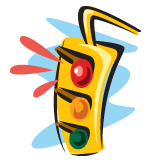 It is first and foremost to comply with federal, state, and local regulations regarding the maintenance of a sanitary patient contact environment. It is also important to prepare for medical emergencies, for which basic resuscitation and hospital transport equipment are requisite. Be sure to provide these essential equipment and supplies at your practice or clinic.
It is first and foremost to comply with federal, state, and local regulations regarding the maintenance of a sanitary patient contact environment. It is also important to prepare for medical emergencies, for which basic resuscitation and hospital transport equipment are requisite. Be sure to provide these essential equipment and supplies at your practice or clinic.
Next, it is important to define which anti-aging medical diagnostics your practice or clinic will offer, and secure the appropriate equipment and supplies to carry them out. A basic of anti-aging medical diagnostics is laboratory testing. It is critical to assess all anti-aging patients prior to initiating anti-aging therapies on patients, so as to establish baselines (starting points). For follow-up testing, it is strongly recommended that anti-aging patients be tested at least twice a year. Either/both blood and/or saliva testing can be offered.
The basic lab tests for anti-aging include:
• Basic blood chemistries: CBC, Electrolytes [Sodium (Na), Calcium (Ca), Phosphorus (P), Potassium (K), Magnesium (Mg), Creatinine (Cr)], etc.
• Nutritional profiles: Vitamins (including antioxidants), Amino Acids
• Hormonal profiles: Thyroid (T4 and T3), Cortisol, DHEA, Testosterone, Progesterone, Pregnenolone, E2, HGH, Melatonin, 17- ketosteroids, 11-OH steroids; Female-specific; and Male-specific
• Toxic load (for some individuals, depending on environmental and/or occupational exposures): Markers for exposure to xylene, toluene, benzene, trimethylbenzene, styrene, phthalate, etc.; Candida; etc.
Equipment for the anti-aging medical therapeutics that your practice or clinic will offer also needs to be secured (see "S"). It is both operationally and fiscally wise to select a few therapeutics to offer initially in opening an anti-aging practice or clinic, and then add on therapies as you grow.
I is for First Impressions
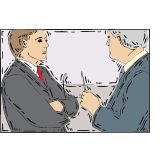 The adage "There is only one opportunity to make a good first impression" holds very true for the anti-aging practice and clinic, because the anti-aging patient can be quite discerning. Pay particular attention to the entrance area, signage, Reception and Waiting Areas, and Consultation Rooms, making sure that each is clean, bright, and neat.
The adage "There is only one opportunity to make a good first impression" holds very true for the anti-aging practice and clinic, because the anti-aging patient can be quite discerning. Pay particular attention to the entrance area, signage, Reception and Waiting Areas, and Consultation Rooms, making sure that each is clean, bright, and neat.
Decorate in an inviting but clutter-free fashion, and assign a staff member to maintain these areas in their optimal presentation. Invest in high-quality stationery and letterhead. Because much of a first impression is made via phone, make sure your Reception personnel are pleasant, courteous, and helpful. Remember, your practice or clinic won't have a second chance to impress your patient base.
G is for Goals
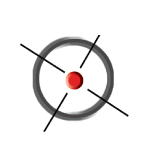 Establish a set of long-term goals for your anti-aging practice or clinic. This should be accomplished in conjunction with your Business Plan (see "B" above). What is it you seek to do by the one-year anniversary of your anti-aging practice or clinic? By the five-year anniversary? In ten years? When setting your goals, be sure there is a way to measure your progress towards them.
Establish a set of long-term goals for your anti-aging practice or clinic. This should be accomplished in conjunction with your Business Plan (see "B" above). What is it you seek to do by the one-year anniversary of your anti-aging practice or clinic? By the five-year anniversary? In ten years? When setting your goals, be sure there is a way to measure your progress towards them.
If you are aiming to be the most popular anti-aging practice or clinic within a 20-mile geographic area, you should be able to document from where patients are coming, how often they come for consults, how you secure new patients (see "M"), and how you retain existing patients (see "R").
H is for Hours
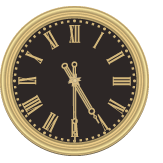 The typical anti-aging patient is discerning and savvy. To succeed, your practice or clinic must be accessible to the target demographic (see "D"), which as a group are high-achievers commonly plagued by time constraints.
The typical anti-aging patient is discerning and savvy. To succeed, your practice or clinic must be accessible to the target demographic (see "D"), which as a group are high-achievers commonly plagued by time constraints.
As a group, anti-aging patients may not be available during standard "9 to 5" business hours. To accommodate these highly stressed and time challenged clients, consider keeping your practice open late for at least one day a week, and/or open for business on Saturday or Sunday. Be mindful, too, that anti-aging patients are not afraid to comparison shop. If your competition offers consults at more conducive hours, you need to make an effort to make similar hours available.
I is for Insurance
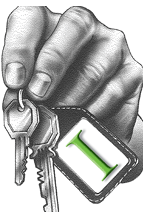 Anti-aging practices and clinics are exposed to certain risks associated with alternative medicine procedures like hormones and aesthetic medicine. Procuring quality medical malpractice insurance protects you as a healthcare practitioner and your business assets as your practice expands. Standard medical malpractice insurance markets, dominated by a few large carriers and state physicians owned mutuals, have been slow to adapt to the changing needs in providing coverage for such activities.
Anti-aging practices and clinics are exposed to certain risks associated with alternative medicine procedures like hormones and aesthetic medicine. Procuring quality medical malpractice insurance protects you as a healthcare practitioner and your business assets as your practice expands. Standard medical malpractice insurance markets, dominated by a few large carriers and state physicians owned mutuals, have been slow to adapt to the changing needs in providing coverage for such activities.
The medical malpractice market is currently in flux. Certain insurance specialty markets have emerged recently who provide top-rated coverage at competitive prices. Providing insurance broad enough to cover practically all alternative and aesthetic medicine procedures. Key issues being the types of procedures and treatments you are performing at your clinic/spa and your specific training and experience for same. Since your practice is also a business, your Business Plan (see "B") should include addressing this key issue.
|
|
|||